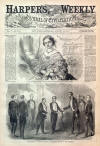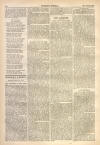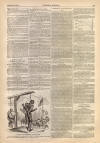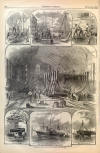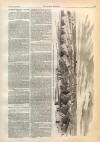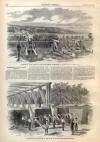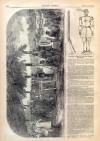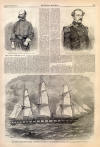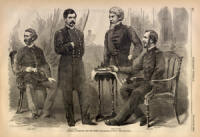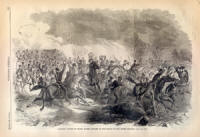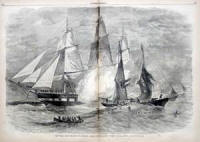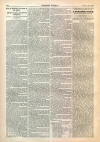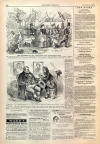Robert E. Lee
|
|
This Site:
|
AUGUST 24, 1861.] HARPER'S WEEKLY. 541 BRIGADIER-GENERAL BURNSIDE.-[PHOTOGRAPHED BY BRADY.]THE REBEL GENERAL LEE.-[PHOTOGRAPHED BY BRADY.]BRIG.-GEN. BURNSIDE, U.S.A.WE take pleasure in laying before our readers the portrait of BRIGADIER-GENERAL BURNSIDE, United States Army, one of the most gallant officers in the army. General Burnside was born some thirty-seven years ago, in Indiana, and entered the Military Academy at West Point from that State. On graduating he entered the Second Artillery, and served in Captain (now rebel General) Bragg's Company for several years. Some six or seven years since he invented a rifle of peculiar merit, and, resigning his rank in the army (which was that of Lieutenant), devoted his whole time to his invention. At that period it was intended to arm the United States army with some improved weapon, and several inventors competed for the prize. Among others, Burnside's rifle was the subject of many tests, and, in the opinion of good judges, was the best of the many pieces offered to the War Department. The inventor had reason to believe that it would be the one chosen : he had, we understand, assurances to that effect from John B. Floyd, then Secretary of War, and was thus induced to incur heavy outlays to bring his weapon to perfection. But the fact was that Floyd had already made a secret bargain with another inventor to decide in favor of his rifle, on the condition that he, Floyd, was to participate in the profits of the invention. This appalling discovery was made by Major Burnside after he had incurred very heavy expenses to bring his weapon to perfection. He was a ruined man. He returned to New York without occupation, without money, and with heavy debts pressing for payment. We believe it to be a fact that, a few days after the discovery of Floyd's treachery, he walked up the Bowery as bravely as he would have walked up to a hostile battery, entered a Jew clothing-store, and sold his uniform and sword for something like thirty dollars; handing this, and some twenty dollars more, to his wife, he kept half as much for himself, and went to the West in search of employment. There he had the good luck to meet with the President of the Illinois Central, who, at once struck with the remarkable merit of the man, offered him a post in that Company's service by the side of the present General McClellan. He served the Illinois Central until the outbreak of the war; and we hope that we may be forgiven for adding that, until recently—when a fortunate legacy raised General Burnside to a position of affluence—by the practice of the most rigid economy, he was able to pay over two-thirds of his salary monthly to the creditors to whom he had become indebted in consequence of the treachery of John B. Floyd. General Burnside is a remarkably handsome man, and very winning in his manners. He is popular with every one, and has many friends at the South. In January last, when only a few persons here foresaw the issue of war, he warned the leading men of New Orleans, on the occasion of a visit there, of the consequences of their mad folly. " You are going to involve us in war," he said, " and you will be beaten. One Northern man can whip two of your people." They didn't like it, but Burnside's eye warned them that he was a man with whom it would not be pleasant to quarrel. We can not conclude this little sketch without adding that, as in all well-ordered stories, the rogue Floyd made nothing by his rascality. Jeff Davis, then chairman of the Senate Committee on Military affairs, found him out, and was so disgusted that he introduced — solely for the purpose of heading off Floyd— a bill to prohibit the purchase of patented arms for the United States army. He explained the motive of the bill privately to the leaders of both Houses, and it became a law, greatly to Floyd's discomfiture, as may be imagined. We do not envy Brigadier-General Floyd if, in the course of the war, he should happen to meet his old acquaintance, the gallant Brigadier-General Burnside. THE REBEL GENERAL LEE.WE publish herewith, from a photograph by Brady, a portrait of the rebel GENERAL LEE, now one of the " Generals" of the Confederate forces in Virginia. ROBERT E. LEE was born in Virginia about the year 1808. He entered West Point, where he received the usual military education at the cost of the Government of the United States. He graduated honorably in 1829, and received an appointment as Second Lieutenant of Engineers. For eighteen years he served in the army, drawing the usual pay from the Government, and rising to the rank of Major and Lieutenant-Colonel of Cavalry. In the Mexican war he was further honored by a brevet of Colonel, and on the appointment of Albert S. Johnston to the command of the Utah expedition, Lee succeeded him in command of the 2d Cavalry. After filling this honorable and agreeable post in the military service of his country for several years, he crowned his career by deserting his flag at the moment of his country's sorest need. When the Richmond politicians passed what they called an Ordinance of Secession, Robert E. Lee threw up his commission and accepted the rank of General in the rebel army. THE UNITED STATES WAR STEAMER "MINNESOTA," FLAG-SHIP OF THE BLOCKADING SQUADRON.—[PHOTOGRAPHED BY WHIPPLE, OF BOSTON.]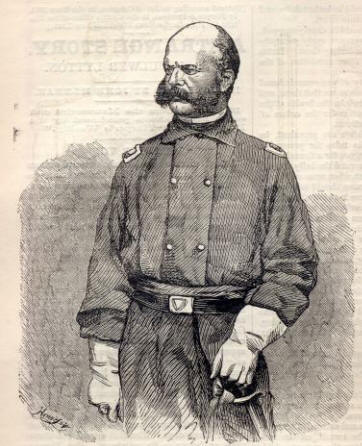 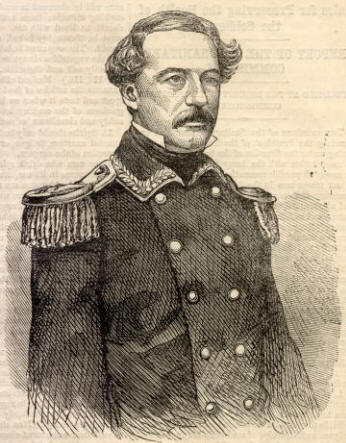 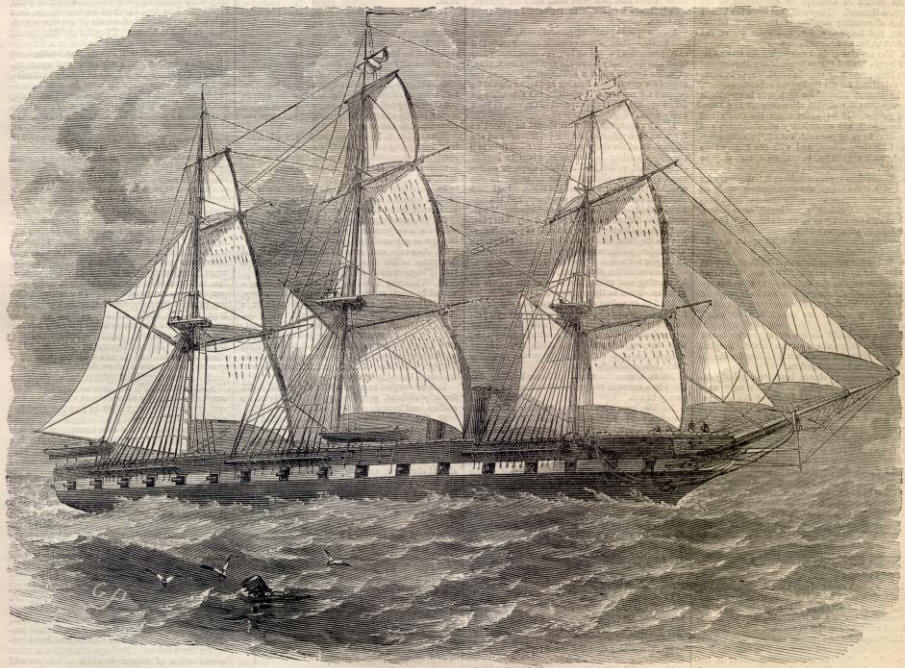 |
||||||||||||||||||||||||
|
|
||
|
|
Site Copyright 2003-2018 Son of the South. For Questions or comments about this collection, contact: paul@sonofthesouth.net |
|
|
Are you Scared and Confused? Read My Snake Story, a story of hope and encouragement, to help you face your fears. |
||
